Barbi Streppaticcio 75 cl.
 I.G.T. Umbria, Umbria, Italy.
I.G.T. Umbria, Umbria, Italy.![]() Sangiovese and Montepulciano.
Sangiovese and Montepulciano.![]() Red wine Bottle, 75 cl.
Red wine Bottle, 75 cl.
 EUR, Final price!
EUR, Final price! Receive it
Receive it  July Monday 7
July Monday 7 FREE SHIPPING!
FREE SHIPPING!| Producer | Barbi. |
| Name | Streppaticcio. |
| Variety |
|
| Country of origin |
 Italy. Italy.
|
| Region of origin |
 Umbria. Umbria.
|
| Appellation of origin |
 I.G.T. Umbria. I.G.T. Umbria.
|
| (UE)401/2010 Certification |
Indicazione Geografica Tipica (I.G.T.) I.G.T. Umbria. |
| Production region | The production region of I.G.T. Umbria is located in La región de Umbria, Italia. |
| Weight | 1.500 gr. (1,5 Kg.). |
| Typology |
Red wine. I.G.T. Umbria. |
| Variety |
|
| Vintage / Harvest |
Currently marketed by the producer.
|
| Format | Bottle. |
| Capacity | 75 cl. |
| Alcohol content | 13.5% Vol. |
| Weight | 1.500 gr. (1,5 Kg.). |
| Product reference | WAN4551040 |
| Actual price | 9,95 € . This product is currently not available. |
| Storage position | Lateral position, horizontal bottle. |
| Storage temperature |
Store at a constant temperature between 10-17ºC. Humidity should be constant around 60-80%. |
| Recommendations | Keep preferably away from light. |
| Visual tasting note | Dense tear, Pink highlights, Elegant, Ripe pillory. |
| Olfactory tasting note | Vegetable notes, Peach skin, Noble aldehydes, Herbaceous aromas. |
| Tasting note | Fresh finish, Pleasant freshness, Light in attack. |
| Recommended pairing | Prawns, Mediterranean dishes, Vegetables, Dishes of contrasting flavors. |
| Consumption temperature | 16ºC - 18ºC. |
| Consumption | It is recommended to drink in moderation and demonstrate a responsible consumption of alcoholic beverages. |
| Please keep in mind |
The information provided and referred to the product features and details has been provided by the expert, manufacturer or producer or published on the official sites. In no case can it be considered as assessment made by our team, unless expressly stated otherwise. We suggest you to refer to the comments and reviews posted by our customers and users to expand and contrast this information. |
| Misreading |
Our team provides this information and details in ESPAÑOL language. If you browse in another language note that the information contained may have been translated from the original language through an automated real-time process that has not been supervised by our human team. In case of doubt, misunderstanding or misreading about the content of this information you should refer to the original version of this page or contact our customer service team. |
| Product image |
The product image or its label is only relevant for graphic purposes, so it may not match the identification of the vintage or other features and details of the product for sale. This product is provided in the conditions and format in which it is marketed at the current time. This product is not identified or supplied in a specific vintage. The product image and label may not match the vintage identification or other characteristics and details of the product for sale. |
| Legal Notice |
It is against the law to sell or supply alcohol to, or to obtain alcohol on behalf of a person under the age of 18 years. If you are not more than 18 years old, you must leave this website. |
| Return policy |
Return policy. Last update: Wednesday, 21 May 2025 For further information: Terms and conditions of the service. |
Selection by «Message in a Bottle®»
Red Wine. Premium Edition MBS Reserva. Customizable label.
No customer reviews at this time. Be the first to post a review!
Product Selection by Barbi.
7 Products, The best selection by Barbi.
Barbi Streppaticcio 75 cl.
Additional information.

|
«Barbi Streppaticcio Umbria» is produced by Barbi. In the elaboration of «Barbi Streppaticcio Umbria» the grape varieties that are used are Sangiovese and Montepulciano. «Barbi Streppaticcio Umbria» is a product from Italy. The production region of «Barbi Streppaticcio Umbria» is Umbria. It is certified with I.G.T. Umbria. The production region of I.G.T. Umbria is located in La región de Umbria, Italia. The weight of «Barbi Streppaticcio Umbria» is 1.500 grams (1,5 Kg.). |
Appellation of origin:
I.G.T. Umbria.
Barbi Streppaticcio 75 cl.
 Español [ ES ]
Español [ ES ]Vino Umbría IGT.
Umbría IGT es el título regional de Indicazione Geografica Tipica ( IGT ) para Umbría , en la zona central de Italia, que vas desde el pequeño pueblo de San Giustino en el norte hasta Santa Maria delle Neve en el sur. Umbría es la única región italiana sin costa ni frontera internacional. Sus vecinos en la costa del Tirreno son Toscana y Lazio, y está separada de la costa del Adriático solo por la región de Marche. Su producción anual de vino ronda el millón millón de hectolitros, lo que convierte a Umbría en la cuarta región vinícola más pequeña de Italia por producción. La mayor parte de la producción de Umbría se vendía tradicionalmente como Vino di Tavola, un vino sin prestigio ni precios altos, por lo que la llegada, a mediados de la década de los noventa del sello de calidad IGT, con su enfoque moderno y flexible en la elaboración de los vinos, fue calurosamente acogido por el impulso que suponía para los viticultores de la región. El sello IGT es un punto medio entre las estrictas condiciones de producción de DOC/G, que se equilibran con los precios más altos del mercado, y las condiciones casi inexistentes de Vino di Tavola.
Los vinos.
Los vinos IGT de Umbría abarcan desde lo tradicional a lo moderno, tanto en términos de variedades de uva como en técnicas de vinificación. Se elaboran vinos Umbría con las variedades italianas tradicionales, como Sangiovese y Montepulciano, junto con las variedades francesas de éxito internacional Cabernet Sauvignon , Merlot y Pinot Noir. Se elaboran vinos monovarietales y también mezclas de las distintas uvas. La calidad de los caldos Umbría está aumentando, debido en gran medida a la participación de consultores enólogos de otras regiones e incluso de otros países. Esta inversión ha llevado a mejoras particularmente en el Sangiovese local. Los vinos blancos Umbría IGT tienden a estar compuestos por el omnipresente Chardonnay y Grechetto, la variedad con la que se elabora el vino más famoso de Umbría, el Orvieto. Además de su título genérico de IGT regional, Umbría también tiene varios IGT más específicos de ubicación. Estos incluyen Allerona IGT, Bettona, IGT, Cannara IGT, Narni IGT y Spello IGT. Umbría está bendecida por un clima similar a la Toscana, templado y seco, pero suficientemente frío gracias al río Tiber y sus afluentes que fluyen a lo largo de la región. El suelo es principalmente de arcilla calcárea y arena, con abundante piedra caliza, beneficiosa para las cepas. Teniendo en cuenta sus recursos naturales, Umbría no había desarrollado su potencial vitivinícola, pero en los últimos años, la Umbría ha progresado significativamente. El vino tinto más conocido de la región, Rubesco Riserva, el Torgiano Rosso Riserva DOCG de Lungarotti, la primera familia de vinos de Umbría, sigue siendo admirado en todo el mundo. Y últimamente, otro vino DOCG Umbría, el tinto sagrantino di montelfalco, finalmente está recibiendo una atención más allá de las fronteras de Umbría.
El Orvieto.
Umbría siempre ha sido conocida como una región de vino blanco. El 23% de sus vinos son DOC o DOCG, y un alto porcentaje de este vino lo son, principalmente Orvieto, elaborado por grandes bodegas o cooperativas. Pero las últimas cifras revelan que el 40 por ciento de los vinos de Umbría ahora son tintos, que han dado un gran salto en la producción durante los últimos años. Con el debut de tres nuevos DOC en los últimos años, Umbría ahora tiene 11 vinos DOC, además de sus dos vinos DOCG. La mayoría de estos vinos provienen de la provincia de Perugia, que ocupa los dos tercios del norte de la Umbría. Pero muchos vinos finos de Umbría, especialmente los tintos, llevan la designación IGT Umbría, porque ese nombre tiene un fuerte reconocimiento. En la Edad Media, el Orvieto era un vino dulce de color dorado, solo en los últimos 50 años más o menos la mayoría de los Orvieto se han convertido a vinos secos. En la década de 1970 el verdadero Orvieto, Orvieto Abboccato, era un vino semiseco, popular en Italia. Las regulaciones de DOC todavía permiten la producción de Orvieto dulce o semidulce, además del estilo seco. Orvieto es un vino elaborado con mezcla de uvas y que, a partir del año 2000, contiene al menos un 60% de grechetto, considerada su mejor variedad, con hasta 15% de trebbiano, conocido localmente como procanico, además de otras variedades locales blancas como verdello, canaiolo bianco y malvasía. Esta fórmula permite que los productos produzcan el vino en diversos grados de riqueza, algunos productores utilizan la mayor cantidad de grechetto posible en el vino, para darle sabor y peso a la fruta, por ejemplo. La calidad en los últimos años ha mejorado gracias a la experimentación con las uvas y en la elaboración del vino, y el trabajo de los enólogos Riccardo y Renzo Cotarella. Como evidencia de la nueva dirección del vino tinto de Umbría, Orvieto ahora tiene un vino tinto DOC acompañante, Rosse orvietano, hecho en un área muy grande que incluye toda la zona de Orvieto.
Red wine I.G.T. Umbria
Product Selection Red wine I.G.T. Umbria.
Barbi Streppaticcio 75 cl.
Variety:
Sangiovese.
Barbi Streppaticcio 75 cl.
 Español [ ES ]
Español [ ES ]Origen.
Se sospecha que la variedad sangiovese fue la usada para la elaboración del vino romano. Hay autores que afirman que los etruscos tomaron esta vid cuando era salvaje para cultivarla por primera vez, poniendo los primeros viñedos en la Toscana. La sangiovese es una uva tinta, cuyo nombre tiene su origen en el latín "Sanguis Jovis", que significa sangre de Júpiter en referencia al dios romano Júpiter. Existe una leyenda que atribuyen el nombre a los monjes de la localidad de Santarcangelo di Romagna, lo que hoy en día es la provincia de Rímini, en la región de Emilia-Romaña, Italia. El primer documento, que hace referencia a esta uva, del que se tienen noticias es un escrito fechado en 1590, cuya autoría se atribuye a Giovanvettorio Soderini (también conocido con el seudónimo de Ciriegiulo). Soderini llama a la uva sangiogheto, y dice que esta uva de la Toscana produce vinos muy buenos, pero, si los productores no tienen cuidado, este se puede avinagrar. Aunque no se puede afirmar con total rotundidad que ambas uvas sean la misma, muchos estudiosos del vino consideran que es la primera mención a esta variedad. En 1738, Cosimo Trinci describió a los vinos de sangiovese como excelentes cuando se integraba en vinos multivarietales pero duramente ácidos cuando se trata de vinos monovarietales. En el siglo XVIII la sangiovese comienza a tomar nombre y popularidad debido a su expansión por la Toscana, llegando a convertirse en una de las variedades más cultivadas en la zona, junto con la malvasía y la trebbiano. En la década de los setenta, los viticultores de la Toscana introdujeron nuevas técnicas de elaboración, mezclando variedades de uva de fuera de Italia, como la cabernet Sauvignon, envejeciendo los caldos en barricas de roble, creando de este modo vinos que fueron etiquetados comercialmente como Súper Toscanos.
Características.
Existen alrededor de 14 variedades de uva Sangiovese, siendo la Brunello y la Prugnolo Gentile, que son uvas que crecen mejor en alturas bajas porque la piel tarda más tiempo en madurar, las más famosas. Las uvas son violetas, gruesas de piel, extremadamente ácidas y de contenido tánico moderado o alto, dependiendo del clon. Se desarrollarán en todo su esplendor en suelos calizos con climas cálidos y secos. Las vides suelen ser muy resistentes a las enfermedades, pero las bayas se pudren muy fácilmente. Las uvas Sangiovese son violetas, de piel gruesa, muy ácidas, de contenido tánico moderado o alto. Su maduración es tardía. Aportan aromas frutales, florales y especiados al vino, aunque éstos pueden ser fácilmente opacados en los blends tintos si las uvas utilizadas no son de la mejor calidad. Esta variedad es muy afín al suelo calizo y a climas cálidos y secos. En estas condiciones, sus características varietales se desarrollan en toda su plenitud. Es una uva de buena calidad y apreciada por su alto contenido de ácido, taninos firmes y naturaleza equilibrada. Son característicos los sabores salados de cerezas oscuras y fruta de hueso negra que pueden estar respaldados por notas secundarias de hojas de tomate y hierbas secas. Si el vino es joven puede tener un acabado algo amargo. El uso del roble se ha vuelto más popular y esto culmina hacia los sabores más ricos de las uvas, tendiendo hacia la ciruela y la frambuesa silvestre. Las sinonimias de la uva Sangiovese son, Nielluccio, Sangioveto, Sangiovese Grosso, Sangiovese Piccolo, Brunello, Prugnolo Gentile, Morellino.
Zonas de cultivo.
Se pueden encontrar viñedos de sangiovese en cualquier parte del mundo, no obstante, la tierra natal de esta uva es Italia, que es además su principal productor, sobre todo en la Toscana. La variedad de uva sangiovese también está implantada en otras zonas de Italia como Lacio, Umbría, Marche y también en Corcega. Los italianos emigrados al continente americano plantaron viñedos de esta variedad, tanto en Norteamérica como en Sudamérica, siendo los principales ejemplos de esta expansión las zonas de California en EE. UU. y Mendoza en Argentina. También se pueden encontrar viñedos de sangiovese en Francia, Chile, Brasil, Sudáfrica y Australia.
Vinos.
Todos los clones de Sangiovese tienen una maduración relativamente lenta, lo que resulta en una temporada de crecimiento extendida y en vinos más ricos, fuertes y de mayor duración que los elaborados a partir de variedades de maduración temprana. Cuando se anima a las vides a producir mayores rendimientos, la acidez naturalmente alta del vino se acentúa y su color característico se diluye notablemente. Se experimentan dificultades adicionales debido a la fina capa de la uva, que la hace susceptible a la putrefacción en condiciones húmedas. Hay grandes vinos hechos con Sangiovese, como el chianti, rosso di Montalcino, Montepulciano o el brunello. Los vinos elaborados con Sangiovese pueden envejecer bien, pero gran parte de ellos están pensados para beberse 1 o 2 años después de la cosecha. Los más longevos de buena añada se puede guardar hasta 20 años. Las características aromáticas de la sangiovese varían mucho según el lugar donde crezca. Los brunellos se caracterizan por los frutos rojos: grosellas, fresas, frambuesas, mermeladas, compota de frutas...; por los perfumes florales: violetas, gladiolos...; por los aromas terrosos: monte bajo, setas...; y por los aromas terciarios: especias, tabaco, alquitrán, ahumados, barnices (en algunas ocasiones los encontramos y provienen de la crianza en "botti", grandes botas de roble, en general usadas). Los chiantis, por su parte, nos presentan una gama aromática variada: cerezas amargas, frutos rojos maduros, mermeladas, compota de frutas, violetas, gladiolos, herbáceos (heno recién cortado)... El vino nobile di Montepulciano nos presenta también frutos rojos, además de aromas terrosos (hongos Boletus edulis , trufa, sotobosque), flores (violetas), frutos secos (almendras)... En Carmignano destacan la vinosidad, las flores marchitas y los frutillos rojos.
Red wine Sangiovese
Product Selection Red wine Sangiovese.
Barbi Streppaticcio 75 cl.

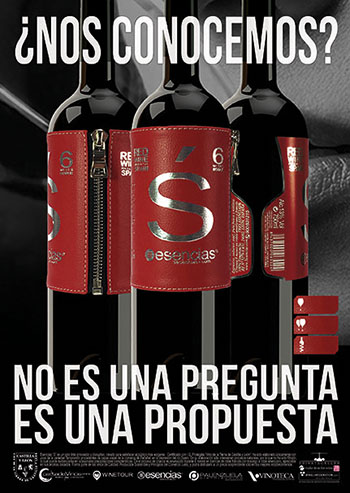
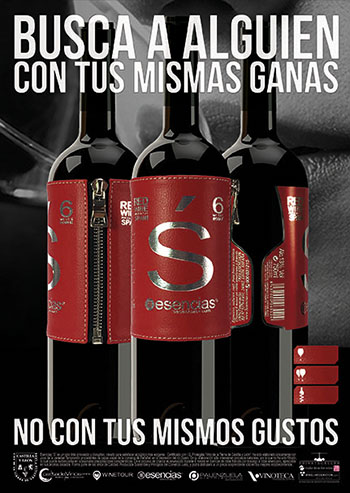
Data sheet.
Barbi Streppaticcio 75 cl.
Red wine. Barbi. Streppaticcio. I.G.T. Umbria. Umbria. Italy. Sangiovese, Montepulciano. Bottle. 75 cl..
| Variety | |
| Country of origin |  Italy. Italy. |
| Region of origin |  Umbria. Umbria. |
| Appellation of origin |  I.G.T. Umbria. I.G.T. Umbria. |
| Vintage / Harvest | Currently marketed by the producer. |
| Format | Bottle. |
| Capacity | 75 cl. |
| Alcohol content | 13.5% Vol. |
| Visual tasting note | Dense tear, Pink highlights, Elegant, Ripe pillory. |
| Olfactory tasting note | Vegetable notes, Peach skin, Noble aldehydes, Herbaceous aromas. |
| Tasting note | Fresh finish, Pleasant freshness, Light in attack. |
| Recommended pairing | Prawns, Mediterranean dishes, Vegetables, Dishes of contrasting flavors. |
| Consumption temperature | 16ºC - 18ºC. |
| Typology | Red wine. I.G.T. Umbria. |
| Producer | Barbi. |
| Name | Streppaticcio. |
| Weight | 1.500 gr. (1,5 Kg.). |
| Product reference | WAN4551040 |
| Actual price | 9,95 € . This product is currently not available. |
| Please keep in mind | The information provided and referred to the product features and details has been provided by the expert, manufacturer or producer or published on the official sites. In no case can it be considered as assessment made by our team, unless expressly stated otherwise. We suggest you to refer to the comments and reviews posted by our customers and users to expand and contrast this information. |
| Misreading | Our team provides this information and details in ESPAÑOL language. If you browse in another language note that the information contained may have been translated from the original language through an automated real-time process that has not been supervised by our human team. In case of doubt, misunderstanding or misreading about the content of this information you should refer to the original version of this page or contact our customer service team. |
| Product image | The product image or its label is only relevant for graphic purposes, so it may not match the identification of the vintage or other features and details of the product for sale. This product is provided in the conditions and format in which it is marketed at the current time. This product is not identified or supplied in a specific vintage. The product image and label may not match the vintage identification or other characteristics and details of the product for sale. |
| Return policy | Return policy. Last update: Wednesday, 21 May 2025 For further information: Terms and conditions of the service. |
| Country of origin | Spain. This product is shipped from Spain. |
| (UE)401/2010 Certification | Indicazione Geografica Tipica (I.G.T.) I.G.T. Umbria. |
| Production region | The production region of I.G.T. Umbria is located in La región de Umbria, Italia. |
| Storage position | Lateral position, horizontal bottle. |
| Storage temperature | Store at a constant temperature between 10-17ºC. Humidity should be constant around 60-80%. |
| Recommendations | Keep preferably away from light. |
| Accessories | This product is provided in the conditions and format in which it is marketed at the current time. In cases where the product includes an additional packaging, box and/or case, These accessories will be included in the shipment as long as they comply with the dimensions of the special packaging adapted and approved for the transport of beverages. In general, the images of the products that we publish on our website are only relevant for graphic purposes. The images do not show other accessories such as additional packaging (box, case, etc.) or promotional elements that may occasionally be included by the manufacturer along with the product. If you wish, we can inform you about the additional packaging, elements and accessories included with the product at the current time. |
| Legal Notice | It is against the law to sell or supply alcohol to, or to obtain alcohol on behalf of a person under the age of 18 years. If you are not more than 18 years old, you must leave this website. |
| Consumption | It is recommended to drink in moderation and demonstrate a responsible consumption of alcoholic beverages. |
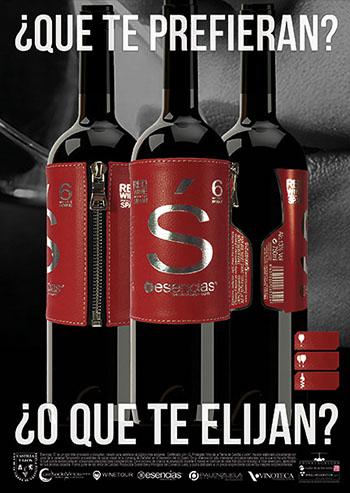
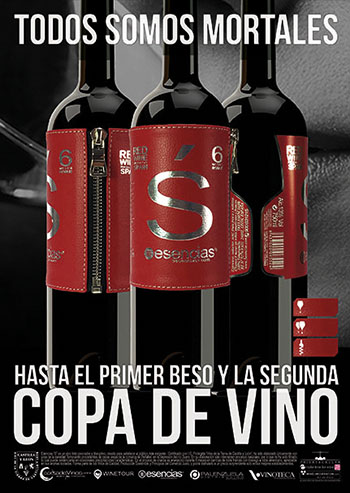
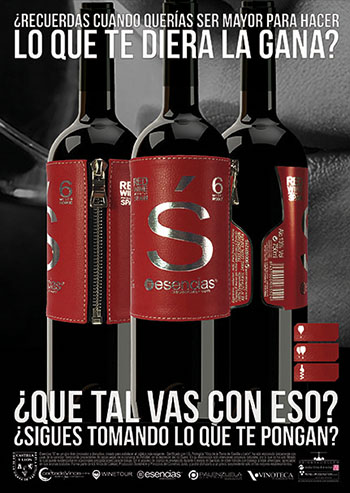
 France
France Argentina
Argentina United States
United States Australia
Australia Portugal
Portugal Chile
Chile New Zealand
New Zealand South Africa
South Africa



 Germany
Germany Austria
Austria



 Tokaj-Hegyalja
Tokaj-Hegyalja





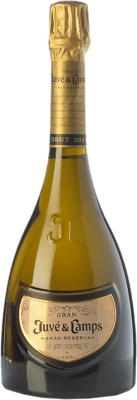
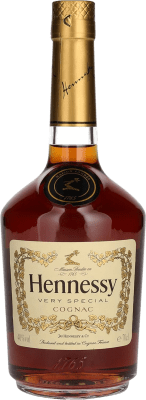


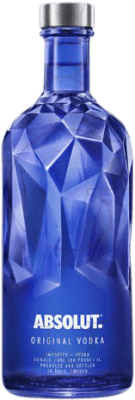






















 Language English
Language English







































